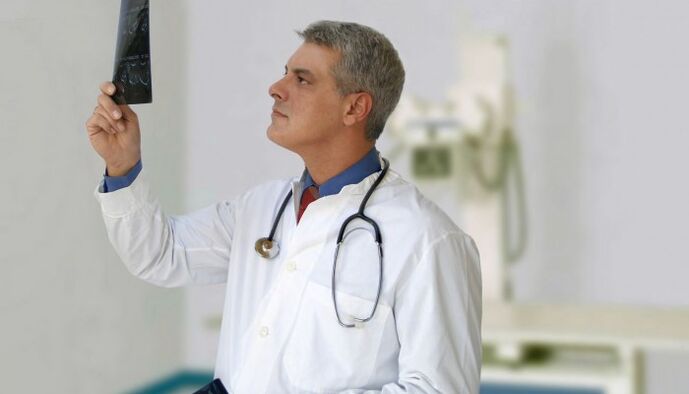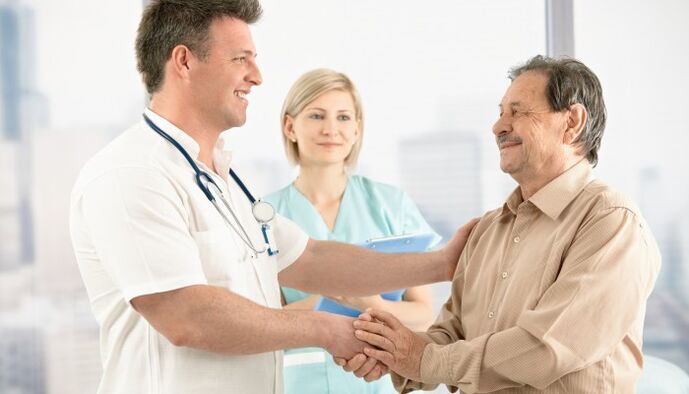Various episodes of back or neck pain can be sudden and always cause significant discomfort. Particular vigilance must be caused by constant painful sensations of an intense nature. Neck pain and upper back pain may also be accompanied by other clinical signs such as heaviness in the back of the head, fatigue, fatigue, headache, and limited mobility.
If the pain syndrome continues for more than a week and the treatment being carried out is not yielding the desired results, professional medical help should be sought. Do not deprive yourself of the opportunity to get rid of a painful illness quickly and effectively.
The reasons

Quite a lot of people are wondering why neck and shoulder pain? As practical experience shows, there can be many reasons for this. The clarification of such problems should be dealt with separately by a specialist, since the correctness of the treatment method depends directly on this. The most common reasons why the back and side of the neck can be very painful and frequent:
- Pathology of the cervical spine (various injuries, bruising, displacement, disc herniation, osteonecrosis, spondylosis, etc. ).
- Myogelosis of the neck.
- Great physical activity.
- Staying in an uncomfortable position for a long time (for example, sleeping in a sitting position).
- Sciatic nerve pain.
- Muscle relaxation (sudden head movement, improper movement).
It has been proven that even trivial scoliosis can cause pain.
Diseases of the cervical spine
If the patient complains of severe and frequent neck and upper back pain, cervical spondylosis should first be ruled out.
Particular attention should be paid to osteonecrosis and spondylolisthesis. Today, these are the two most common diseases of the spine, and in addition to trauma, trauma can cause very significant pain and discomfort in the neck and upper shoulders. Features of pain syndrome in degenerative-dystrophic pathology of the cervical spine:
- Pain is noted at rest, even when the patient tries not to move.
- Usually, it is quite difficult for them to choose a position where they will not feel obvious pain.
- Limited range of motion in the cervical spine is almost always noted.
- Slight pressure on the cervical vertebrae can lead to increased pain.
Myogelosis of the cervical spine

A pathological condition in which there is painful compression of muscle fibers associated with a violation of local blood circulation is called myogelosis. As a rule, the provoking factors are:
- Hypothermia and freezing.
- Blow up.
- Prolonged uncomfortable position.
- Physical fatigue (excessive stress).
Most experts believe that myogelosis should be considered a complication after an inflammatory process in the muscle. It should be noted that it is not only manifested by pain, but also problems with muscle relaxation, increased tone, and limited mobility. In addition, the pain often extends to the upper back and shoulders. If you leave myogelosis untreated, you risk exacerbating your health condition, as it can easily progress to a chronic condition.
If you don't know the real cause of your neck pain, it's better to consult a specialist right away.
Cervical sciatica pain

Compression of nerve roots that exit the spinal cord at the level of the cervical spine leads to sciatica. According to clinical practice, in the majority of cases, osteonecrosis is the cause that leads to the development of this pathology. With sciatica, the patient notes that the neck is painful and burns, so just touching from the back or from the side is impossible. What is the clinical picture observed with lesions of the cervical nerve roots coming out of the spinal cord:
- Severe and constant pain in the neck, shoulder blades, shoulder blades.
- Pain often increases with movement of the head, arms, and upper body.
- Neck muscles are overstretched.
- There is a violation of the sensitivity of the hand (numbness, tingling, etc. ).
- Weakness of the upper extremities.
- Dizziness.
- Headache.
- Increased fatigue.
Crick

Despite the severity of the pain syndrome, muscle strain is considered one of the mildest and can be cured fairly quickly, compared to other conditions that cause pain in the neck and upper back. Injuries, poor exercise performance, and increased stress can lead to muscle relaxation. What complaints will the patient also express:
- Sharp pain in the neck, back of the head and upper shoulder area.
- Excessive muscle tension limits the mobility of the head and cervical spine.
- General condition suffered (physical discomfort, weakness, fatigue appears).
- Neck pain when turning the head.
Diagnose

If the specific cause of cervical pain is not found, it is quite difficult to completely eliminate this pathological symptom. If we only eliminate painful sensations and not their cause, we can only count on temporary improvement. Modern diagnostic methods allow you to quickly narrow down the possible causes of your neck pain from behind, from one side or from both sides. As a rule, the following instrumental studies are used:
- Standard X-ray examination.
- Ultrasound examination.
- ECG.
- Electromechanical.
- Magnetic resonance imaging.
Treatment
What to do if your neck hurts? Even at home, you can take some remedial steps to help reduce soreness. If you associate pain with an injury or muscle strain, you should apply cold for the first 48 hours.
A very effective remedy is to apply an ice or cold object to the neck area for about 15 minutes every few hours. To avoid frostbite from touching ice, direct skin contact should be excluded. To do this, ice or very cold objects are placed in a plastic bag, wrapped in a not-so-thick cloth, and then applied only to the surface of the skin.
After two days, they switched to warm compresses. You can use a regular plastic water heater or a rubber heating pad. The application time should not exceed 20-30 minutes. This procedure can be repeated every 2 hours. Also, give the sore muscles adequate rest. For the first time after an injury or sprain, go to bed more often, trying to relax your neck muscles. It relieves stress best when lying on your back. During the acute phase, it is helpful to limit your participation in various physical activities. Take a short break from exercise.
Don't forget that resting too long will help weaken the muscles of the neck and shoulders. Once you return to a normal rhythm, it will be easier for you to stretch already weak muscles. Alternating dosed physical activity and proper rest is considered optimal, but only in the absence of severe pain. Traditional pain management is as follows:
- Drug treatment.
- Spot treatment.
- Physiotherapy procedures.
- Manual therapy.
- Massage
- Physical therapy.
Talk to your health care professional about what to do if your neck hurts.
Drug treatment

Pain relievers provide quick relief from neck pain of varying intensities. Today, many of these drugs can be purchased at pharmacies without a prescription. However, it should be remembered that most of these drugs have a number of significant side effects and contraindications. Therefore, any medication must be coordinated by a specialist. Usually, non-steroidal anti-inflammatory drugs are used as pain relievers.
Many clinical studies have shown that taking NSAIDs can cause some side effects. Most problems are related to erosive and ulcerative lesions of the gastrointestinal tract. In addition, quite often, along with the pain syndrome, there is a pronounced tension of the neck muscles. To reduce muscle spasms, muscle relaxants should be used.
Local therapy Liệu

Topical therapy has been shown to be beneficial in managing pain in the neck and upper back. As a rule, all ointments, gels and creams are used that have a pronounced analgesic effect. Some drugs are very popular as external agents.
The mechanism of action of pain relievers is different and depends on the active ingredient that is part of the ointment, gel or cream. Only a qualified doctor can tell you which medication is most appropriate for your situation. With severe pain, which brings significant discomfort, sometimes novocaine blockade is prescribed. Medical dressings have also been shown to be effective. The average time of the procedure is about 30 minutes. In order to achieve the desired results, a total of at least 7-8 treatments is required.
If you're not sure what to do when your neck and upper back hurt, it's best to consult a specialist first.
Physical therapy

In most cases, physical therapy treatment is actively involved, including various procedures, massage sessions, and physical therapy exercises. Years of experience have shown the effectiveness of the following physical therapy methods for pain relief:
- Electrophoresis.
- Ultrasound therapy.
- Electrotherapy.
- Magnet.
- Lasers.
- Acupuncture.
Exercise therapy and massage
Therapeutic exercises and massage are mandatory components of complex therapy for almost any disease or medical condition. However, many people forget that they are only used once the acute phase has passed. Severe pain syndrome is considered a contraindication to exercise and massage therapy. An example of a series of basic exercises to relax and strengthen the cervical muscles:
- You can stand or sit. The main thing is to keep your back straight. Hands should be relaxed and lowered. Do 10 head tilts, first to one side, then to the other. Perform the exercise at a calm pace, without sudden movements.
- The situation is similar. We tilt our heads down and try to touch the front surface of the chest with our chin. The number of repetitions is 10 times.
- The situation is similar. We make a back and forth head movement, imitating a duck. The number of repetitions in each direction is 10 times.
- Slow, uniform circular motion of the head. If painful sensations appear, we stop the exercise.
- We sat down on a chair. Place your palm on your forehead. We tilt our heads forward, and at the same time try to resist with our palms. Exercise helps strengthen the anterior neck muscles. You can also place your palms to the left, right, and back and tilt your head to the appropriate side.
- Stand up straight. Relax your arms and place them along the body. We first tilt our head to one side, while lifting our shoulders, then tilt to the other side. The number of repetitions is 10-12 times.
After going through a briefing from a physiotherapist or other specialist, neck self-massage and therapy exercises can be done regularly and at home without any problems. .
Ethnographic

It is hard to argue with the fact that traditional medicine has long had a strong place in our lives. However, if you are not sure what a particular folk remedy is, it should not be used in treatment. Many physicians have seen serious consequences from the overuse of non-traditional treatments more than once in their clinical practice. In some cases, it is permissible to use some folk remedies for pain relief, but only after consulting a doctor. Exclusively for acquaintances, we would like to introduce some traditional medicine recipes:
- You can apply fresh cabbage leaves regularly on the painful area. There is no time limit. Compresses made from cabbage leaves also work well.
- Massage honey. Massage honey into the area on the neck where the patient hurts most.
- Sprinkle with mustard salt. For cooking, you need a kilogram of table salt, a teaspoon of mustard powder and 100 ml of water. Pour all ingredients into the pan and cook for 5 minutes. Then the mixture is poured into a tissue bag, which we put on the sore neck area. To increase the effect, you can wrap a warm cloth around your neck (like a scarf).
Preventive

In many cases, the occurrence of rather unpleasant pain in the neck can be prevented. To do this, it is necessary to avoid all kinds of injuries, muscle strains and heavy physical exertion. It is very undesirable to freeze or get too cold. You should also participate in sports that are active, but not harmful to your health. Do not initiate chronic diseases, especially degenerative-dystrophic pathologies of the musculoskeletal system. Comprehensive health check-up at least once a year.


































